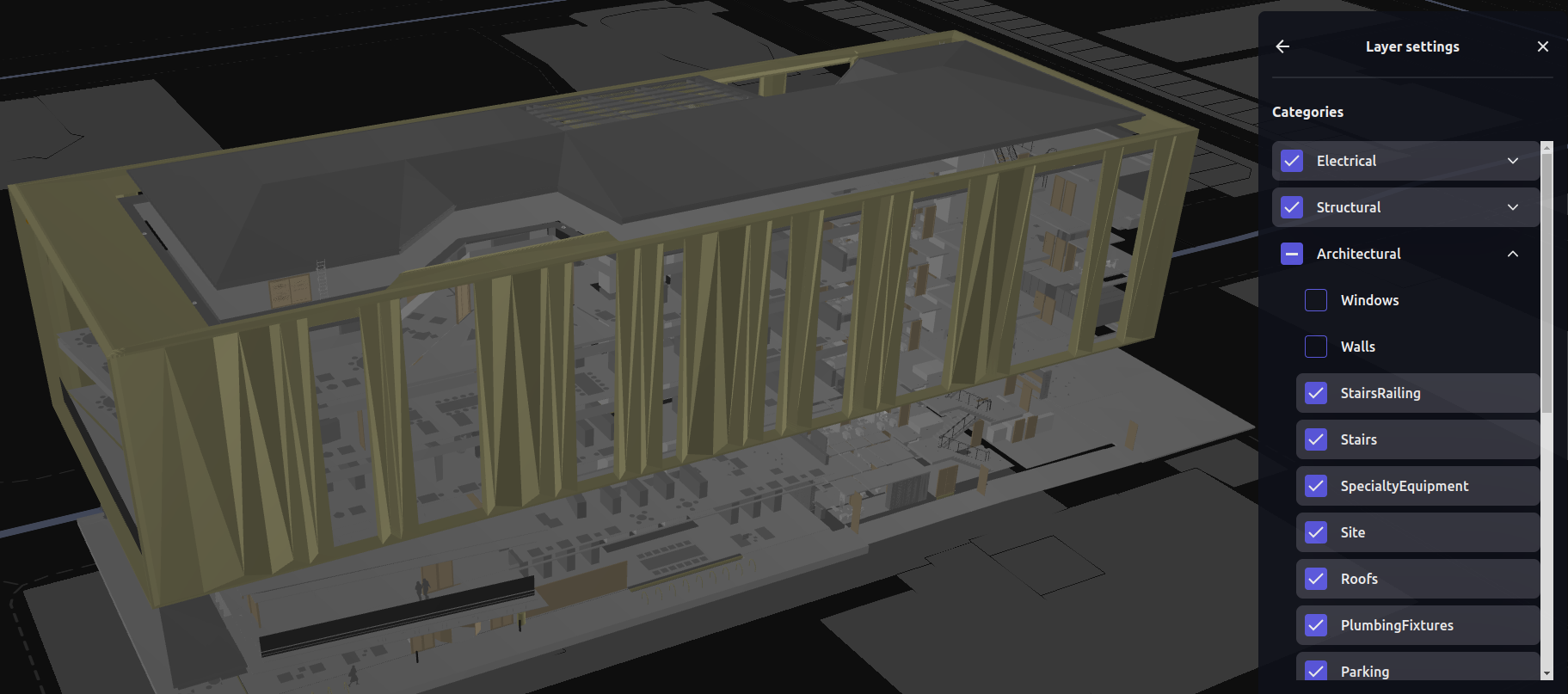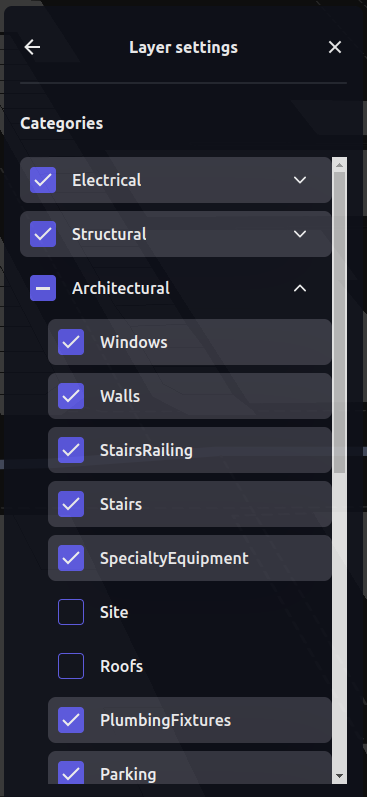I3S Building Scene Layer (BSL)
Please find source code of the example here
A building scene layer can represent 3D model content based on BIM structuring disciplines such as architectural or structural, and categories such as windows or walls. In I3S specification BSL is a layer type.
BSL doesn't have content resources. It is a composite layer that consists of multiple sublayers. Every sublayer can be: group, 3DObject or Point.
group sublayer is also just a composite layer. It contains further levels of sublayers and provides a nested structure for BSL. As a result, BSL has a tree-like sublayers structure with 3DObject and Point layers;
3DObject and Point sublayers are content layers. Those layer types are separated types of layers in I3S spec and can be used independently. Loaders.gl supports 3DObject layer types and doesn't support Point.
BSL visualization with deck.gl
I3S 3DObject layer is shown in deck.gl with Tile3DLayer. The complete case of BSL visualization is done in I3S Explorer. It is an open source ReactJS application. See source code on GitHub.

Load BSL
For BSL it is necessary to do preparation steps to obtain data for Tile3DLayer.
Loaders.gl has I3SBuildingSceneLayerLoader that is used to load BSL JSON metadata and pick 3DObject sublayers.
import {load} from '@loaders.gl/core';
import {I3SBuildingSceneLayerLoader} from '@loaders.gl/i3s';
const {header, sublayers} = await load(tilesetData.url, I3SBuildingSceneLayerLoader);
The loader returns a flattened array called sublayers that contains only 3DObject layers from the BSL sublayers tree.
Show sublayers in deck.gl
import {StaticMap} from 'react-map-gl';
import DeckGL from '@deck.gl/react';
import {Tile3DLayer} from '@deck.gl/geo-layers';
import {COORDINATE_SYSTEM} from '@deck.gl/core';
import {I3SLoader} from '@loaders.gl/i3s';
function renderLayer() {
const tile3dLayers = sublayers.map((layer) => {
if (!layer.visibility) {
return null;
}
const loadOptions = {
i3s: {coordinateSystem: COORDINATE_SYSTEM.LNGLAT_OFFSETS}
};
if (token) {
loadOptions.i3s.token = token;
}
return new Tile3DLayer({
id: `tile3d-layer-${layer.id}`,
data: layer.url,
loader: I3SLoader,
loadOptions
});
});
}
<DeckGL
id={id}
layers={renderLayers()}
viewState={viewState}
onViewStateChange={onViewStateChangeHandler}
>
<StaticMap reuseMaps mapStyle={mapStyle} />
</DeckGL>;
Take a look at sublayer properties:
id- unique identifier required to set deck.gl layer id;url-3DObjectlayer url;visibility- BSL has an initial visibility state for all sublayers. Use this property to control sublayers' visibility.
Control sublayers' visibility
I3SBuildingSceneLayerLoader returns also a header object. header.sublayers is a JSON nested tree that can be used to visualize BSL explorer panel.

With such a panel it is possible to change a sublayer visibility property:
function onChangeHandler(treeItem) => {
const sublayer = sublayers.find((sublayer) => sublayer.id === treeItem.id);
if (sublayer) {
sublayer.visibility = !sublayer.visibility;
}
}
